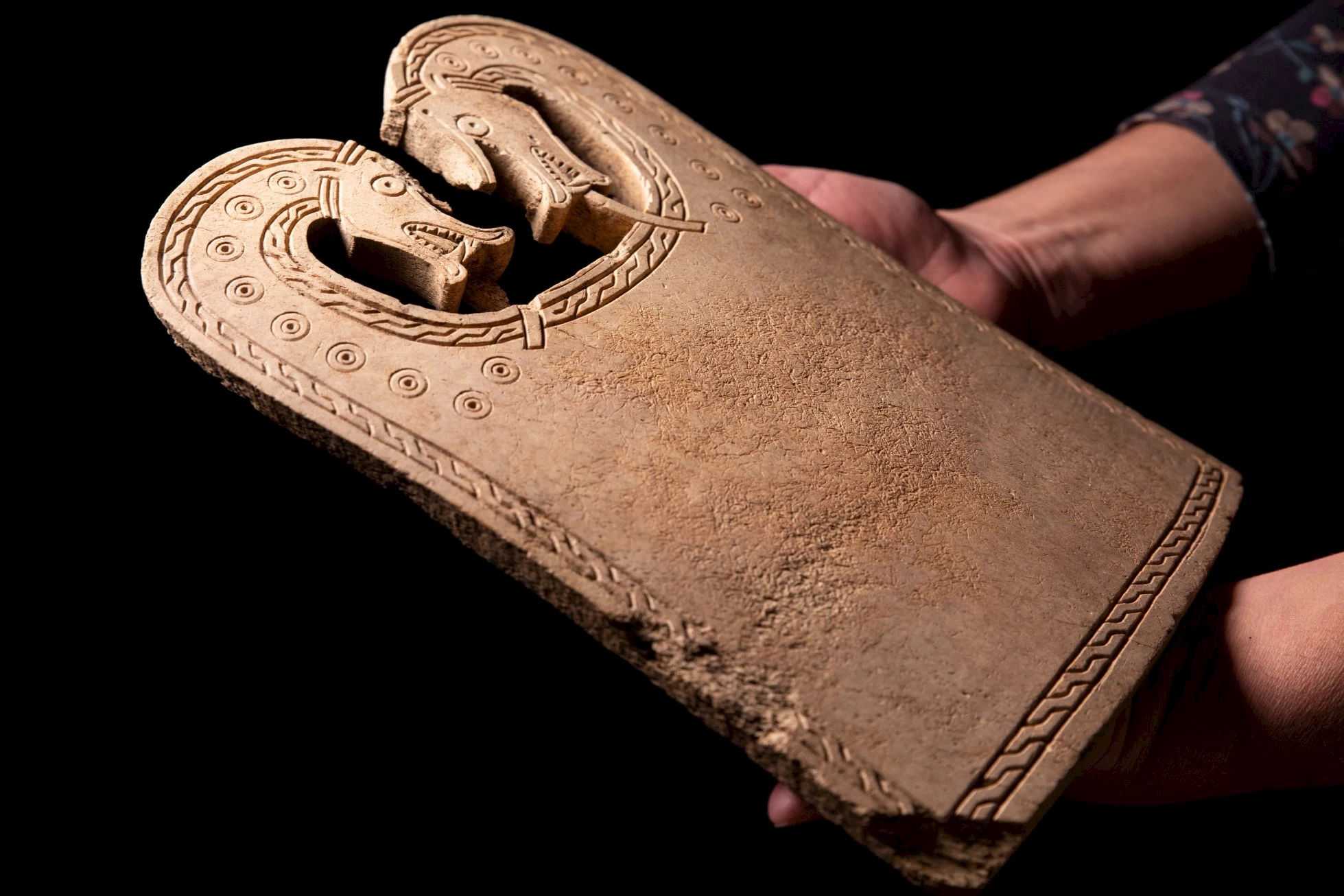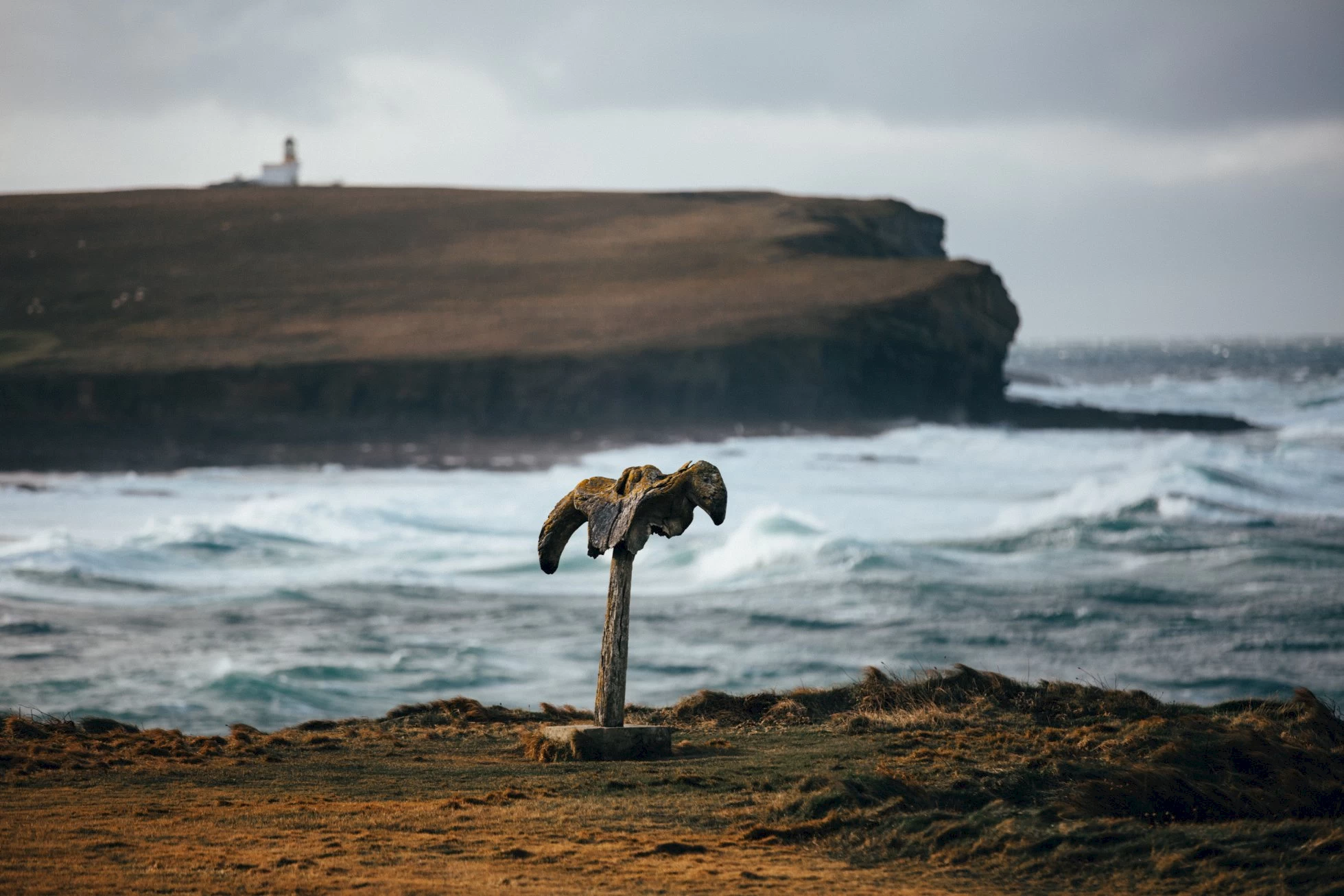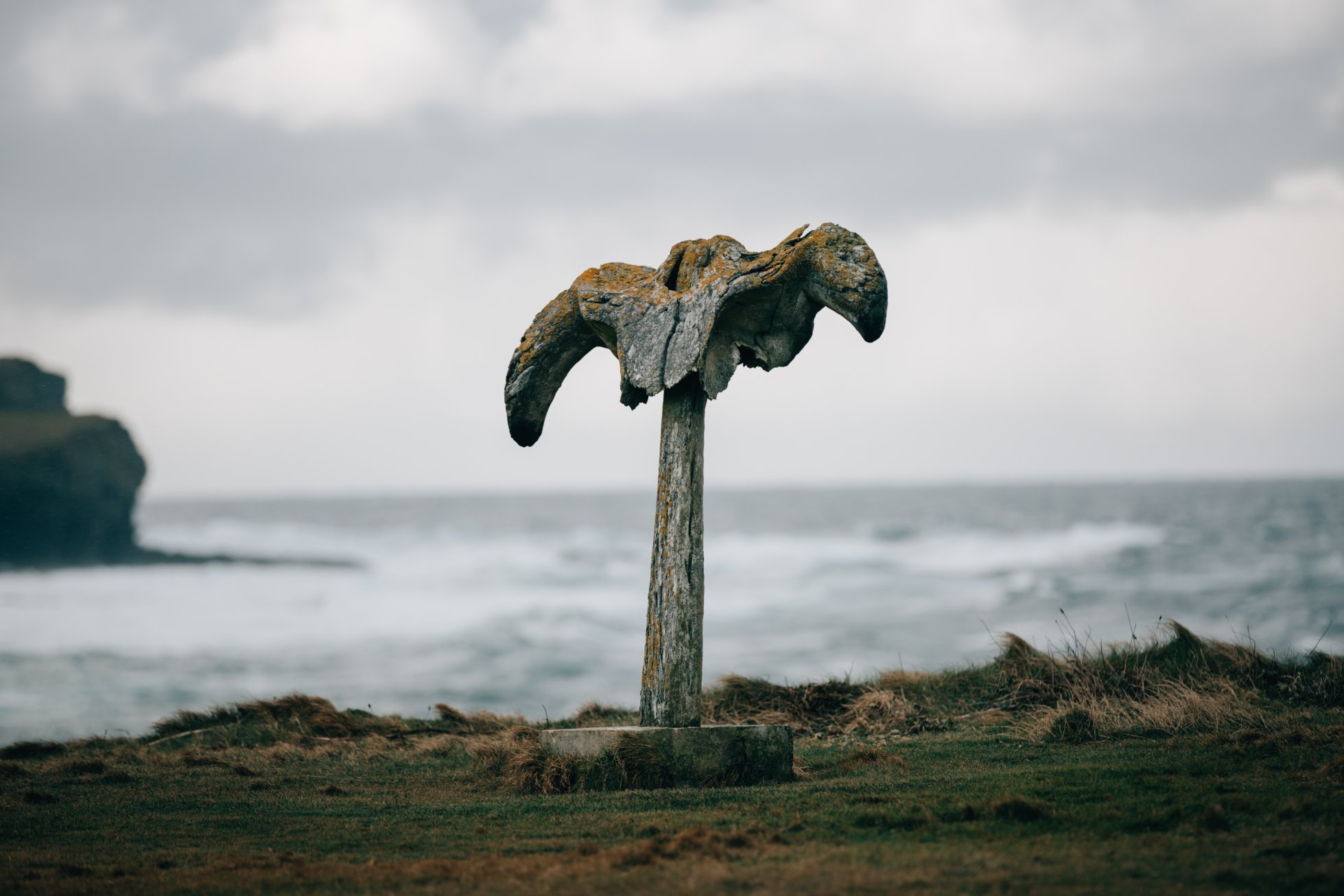NOTE: DUE TO STORM DAMAGE, THE BIRSAY WHALEBONE HAS BEEN REMOVED FOR RESTORATION WORK.
Not far from where the vast Atlantic Ocean meets the stormy North Sea, the Birsay Whalebone looks out across the wave-filled horizon.
Positioned near the cliff edge, its silhouette stands poised like a giant fossilised bird frozen mid-flight. The origins of the whalebone structure have been partly lost in time, with what little is known having been passed down by word of mouth through generations.
The remains of the whale were thought to have been washed up around 1876 on the beach below. An expert has identified the partial jawbone and the back of the skull as belonging to a right whale which are baleen-feeding whales. Right whales were named by whalers because they were considered the 'right' whale to hunt.
These days, many people regard washed up or beached whales as a tragic event. However, for millennia in Orkney, like many coastal communities, they were viewed as a bounty. Every part of a whale had a valuable use, mainly for food, fuel or making practical and decorative items carved from bone.
Archaeological excavations have revealed that from Neolithic to Norse times, whale parts have been utilised by the various inhabitants of Orkney. At The Cairns, a large Iron Age complex, a vertebra from a fin whale, carved to make a vessel, was discovered along with a number of other objects and whale bones. In the Orkney Museum you can view the exquisite Scar whalebone plaque found in a Viking boat burial in Sanday, and in Stromness Museum there is ‘Buddo’, a 5,000-year-old whalebone figurine uncovered at Skara Brae.

The whale at Birsay washed up at a time when whaling had been transformed into a commercial activity and whale products such as oil were a valuable commodity. This period forged a new chapter in Orkney's maritime history and between the 18th and 19th century, whaling ships would stop at Stromness to recruit Orcadians before heading out to the Arctic. Hundreds of local men were taken on as crew each year and at times over 30 whaling ships would be berthed in Stromness harbour. As the whale population started to reduce, the ships would have to enter increasingly dangerous waters, making whaling a risky occupation. In Kirkwall a whaling station was set up in Shore Street to process blubber from the Davis Straits in the Arctic.
To try and capitalise on this profitable trade, the local men of Northside decided they would buy the Birsay whale carcass from the Receiver of Wreck and process it themselves for a bigger profit. Although they did salvage the meat, bone and oil, they were unable to turn the whale over to access all the blubber. It is said that although they didn't lose money, the overall endeavour was seen as a disappointment.
After that, it is presumed the carcass was left to decompose on the beach for at least several more years before the bones could be easily accessed and the sculpture erected. It has been calculated that it was positioned on the coastline near to where the whale was washed up some time after 1880. The purpose of the structure has also been lost in time but theories include it being used as a fishing landmark to help navigate safe passage or that is was placed there as a mark of respect for the whale. Some of the other bones retrieved were used to make a milking stool, a kitchen seat and for decorative purposes.
Whatever the reason it was originally built, the whalebone remains as a physical reminder of the long connection and changing relationship between Orcadians and the magnificent whales that frequently pass through the surrounding waters.
Susanne Arbuckle hosts the Adventures Around Scotland blog. You can also find her on Facebook, Instagram and Twitter.
The Promoting Orkney project has been part financed by the Scottish Government and the European Community Orkney LEADER 2014-2020

